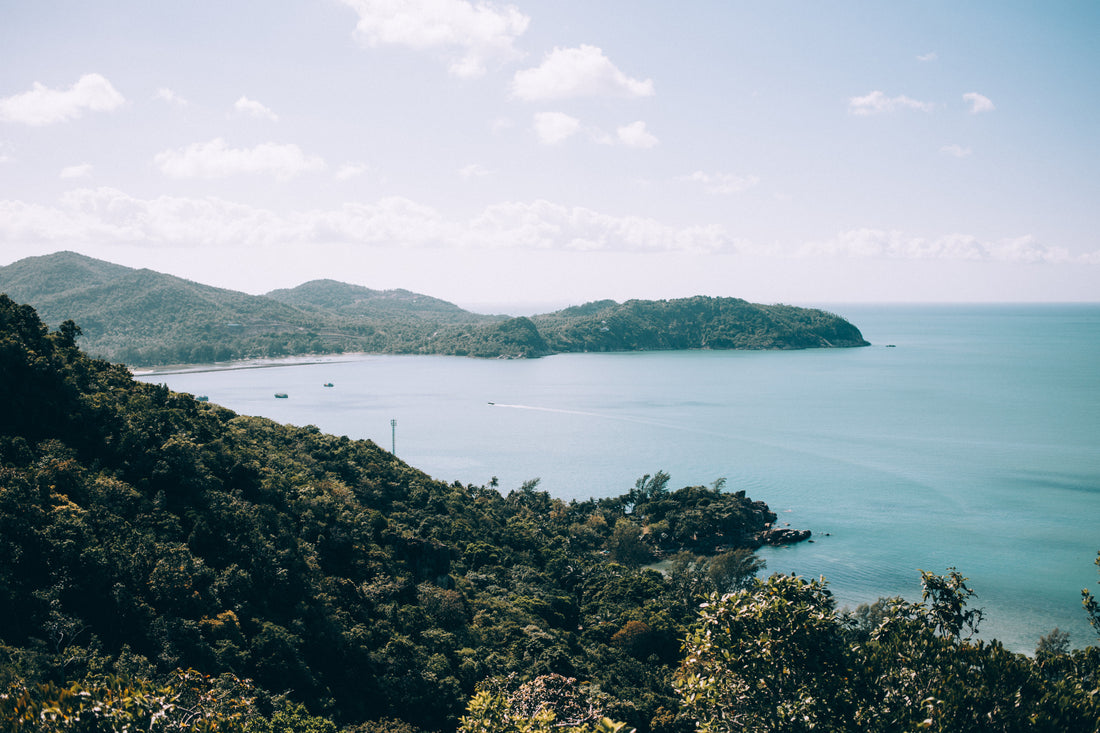THRIVU was born as a project after several years of research. We aimed to understand the added value chain of products and the process by which a system could be implemented to allow the stewards of the land to engage in sustainable work and thrive in conjunction with the ecosystem. The idea of developing a holistic approach that combines multiple varied disciplines such as sociology, engineering, molecular biology, business, literature, and animal al science, among others was only the start of this journey. It begins with an independent project exploring products with the most potential to impact the three pillars of THRIVU; environment, social structures, and health. Our goal is to gain environmental impact through agroecological systems that enhance preservation and regeneration, social impact through the ethical and just distribution of revenue, and health impact through strategies that would allow prosperous holistic impact on soil, plants, animals, and humans and our planet.

THRIVU Native Craft Chocolate
We have started with our first product, chocolate. This phase has different stages of development:
Stage 1: “Nativo by Thrivu” is our line of chocolate made at origin (in the center of origin of cacao; Ecuador, Peru, Bolivia, Colombia, and Brazil) and experimental manufacturing phase in Michigan.
Stage 2: Direct Sourcing from producing partners at origin and manufactured in the US.
Stage 3: Establish ThrivuHubs; Develop fermentation and drying capabilities at the origin.
Stage 4: Build manufacturing capabilities at origin. This is where we strive to become one of the incredible brands, we started with in Stage 1.
Stage 5: Community and environmental regeneration -
The true story of regeneration is ultimately where we want to be, it’s what our vision is focused on (completion of all 5 stages). Currently, a significant proportion of land where cacao and other crops have been produced in the tropics has deteriorated to the point that fertility has been significantly reduced. As you go through astonishing lush forests in these places where cacao grows, you see huge empty gaps, once cleared for use with monocultures using an extractivist linear model, and now abandoned.
What are ruminants? You’ve probably heard someone say, or even said yourself that you need to ruminate on a topic, but where does that word actually come from? Ruminants are animals that have a complex stomach (4 compartments). Some examples of ruminants include cows, sheep, giraffes, and deer. One of the compartments in the complex stomach is called the rumen. This rumen is full of microbes (bacteria, protozoa, fungi, yeast, archaea) that through a symbiotic relationship with the host allow these animals to extract energy and protein from recalcitrant sources. This is the reason why cows evolved to eat grass and thrive. In simple terms, ruminants chew on grass long enough to break it down into digestible parts, much like we might ruminate (or chew) on information until we have broken it down into small enough bits that we can fully digest. There are a significant number of other long, important words and phrases associated with this process that I would be happy to spend time talking through (like volatile fatty acids (VFAs) and anaerobic fermentation), but as I’ve left the classroom for this new venture, I’ll wait for you to reach out to me directly on the topic.
Despite attempts to encourage rural communities in the tropics to embrace sustainable practices in agriculture, the current reality reflects a different outcome. After decades of trying to provide small producers with fair income, the result is that it is still not enough. Why? Because most of the added value is not staying in these places, which has a direct impact on the communities, the environment, and the sustainability of our industry. To rectify this situation, we need to reevaluate how this income is distributed. It is impossible to achieve sustainability, regeneration, and biodiversity in ecosystems without a profitable economy that allows communities to escape systems geared towards subsistence agriculture once and for all. We cannot ask small farmers to preserve the Amazon basin and other ecosystems around the world when saving the forest may mean there is no food on the table for their families. Consider for a moment, a different scenario. Let’s say Latin American countries proposed to the US and Europe that they would buy milk for a few cents higher than the commodity price (assuming it was Fairtrade certified and produced fairly), and then process it into specialty cheese, sold primarily in their home countries, but then agree to ship some back at prices that are 20 to 100 times higher than what they paid for the milk. Would the US and Europe jump onboard? Not a chance, yet, that is exactly what we are doing, and hoping that these farmers do not harm their environment as they try to support their families.
Chocolate and its magic
Chocolate is an indulgence that provides joy to all who consume it (well, almost all, I’m still working on convincing my daughters to consider dark as well as milk chocolate). However, current practices continue to wreak havoc on the environment and people and sacrifice holistic health. We believe in giving this gift of God its true place on the food chain, by doing completely the opposite of what historically has occurred with this superfood. To do so, THRIVU is focused on regenerating and reviving the true life of CACAO, its habitat, its people, and its impact at all levels.

The reason why this is a story of regeneration is that after all the research, experience, and gained knowledge, THRIVU is on a journey to reconnect the dots and help our environment thrive one product at a time.
Follow us to know more about…
How we are Connecting links:
Industrial and Agrarian
Indulgence and Health
Profitability and Resources
Ancestral and Modern

